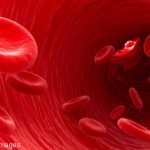The concept for OMERACT, or Outcome Measures in Rheumatology, was born from the American/European divide, with two of the authors (Drs. Boers and Tugwell) musing one evening on the fact that different outcome measures were used in rheumatoid arthritis (RA) clinical trials conducted on either side of the Atlantic. Several questions immediately came to mind: Why should different outcome measures exist? Could consensus be reached? Could a common set of measures be agreed on that would allow comparison between trials and use in meta-analyses?
The outcome of nearly 20 years of deliberation shows that striving for the “truth” in science can transcend those cultural and historic differences that can divide the world. OMERACTers can attest to the vigorous debates conducted at our conferences. Clearly, there is now a sense that consensus can be achieved on evidence presented and subjected to a fundamental screening process to ascertain utility. Thus, the OMERACT “filter” is an important guiding principle.
What Is the OMERACT Filter?
To be accepted as an OMERACT-endorsed outcome measure for use in a clinical trial, the measure must have been passed through the OMERACT filter in its intended setting.1 The filter has three component criteria: truth, discrimination, and feasibility. Each component criterion represents a question to be answered about that measure, in each of its intended settings.
- Truth: Is the measure truthful? Does it measure what it intends to measure? Is the result free of bias and is it clinically relevant? This criterion captures the issues of face, content, and criterion validity.
- Discrimination: Does the measure discriminate between situations that are of interest? These situations can be states at one time (for classification or progress) or states at different times (when measuring changes). This criterion captures the issues of reliability and sensitivity to change.
- Feasibility: Can the measure be applied easily, given the constraints of time, cost, and interpretability? This criterion addresses the practical reality of the use of the measure and is critical in determining the success (adoption) of the measure in the field.
TABLE 1
CONTENT
- Ankylosing spondylitis (AS)
- AS–reference case
- Connective tissue disease–Interstitial lung disease
- Fibromyalgia
- Gout outcome measures
- Hip and knee arthroplasty
- Low back pain
- Osteoarthritis
- Osteoporosis
- Psoriatic arthritis
- Remission in RA
- Systemic lupus erythematosus
- Systemic sclerosis
- Vasculitis
METHODS
- Computerized adaptive testing and item response theory
- Effective consumer
- Equity
- Fatigue
- Flares in RA
- Health economics
- International Classification of Functioning, Disability and Health Literacy
- MRI as an outcome measure in RA
- MRI of the cervical spine
- MRI in AS
- MRI in idiopathic arthritis
- Nonpharmalogical
- Patient perspective
- Psychosocial measures in musculoskeletal trials
- Reevaluating response in RA
- Responsiveness: Low disease activity
- Responsiveness: Minimal clinically important difference
- Responsiveness: Minimal clinically important improvement and patient acceptable symptom state
Safety
- Single joint response
- Soluble biomarkers
- Surrogate outcome
- Synovial tissue analysis in randomized controlled trials
- Total articular replacement criteria
- Ultrasound
- Work productivity
How Does OMERACT Work?
OMERACT has five executives, with members from Australasia, Europe, and North America. Over the past few years, we have established solid relationships with the European League Against Rheumatism (EULAR) and the ACR, both of whom now contribute to the effort by providing fellowships to allow young rheumatology researchers to attend OMERACT meetings. Representatives of these organizations sit on OMERACT’s Scientific Advisory Committee that meets twice a year and also includes clinical investigators and opinion leaders from around the globe.
Every two years, an OMERACT meeting brings together about 200 researchers to debate the latest set of measures. This year the meeting will be held in Borneo, in part as recognition that OMERACT is a global organization and needs to respect the growing influence of Asia. OMERACT venues are typically places where the attendees are “confined” to a fairly remote location so that debates about the science can continue around the dinner table and bar in the evenings. This approach is often a good way of reaching consensus, even if it does lead to a certain bleary-eyedness in the mornings. But it is not all work, and OMERACT 10 is being held adjacent to a conservation area where orangutans and other endangered species are bred in the wild.
OMERACT attendees include researchers, clinicians, epidemiologists (methodologists), clinical trialists (including representatives of the pharmaceutical industry), and, most importantly, patients. Patients have been involved with these meetings and the developments in outcome measures since OMERACT 6 in 2002. They have added significantly to the debate on these issues and have helped make OMERACT outcome measures even more relevant. Patients are involved with every OMERACT working group; we have created an OMERACT Glossary for the benefit of patients, but it is also very useful for health professionals involved in rheumatology trials. An important development has been the OMERACT Fellows program, supported in part by the ACR and EULAR, which brings young researchers to OMERACT meetings and links them to OMERACT projects over time. This close involvement in OMERACT provides them with mentorship through their development as the next wave of rheumatology clinical trialists.
Reaching consensus on what should be measured and how it should be measured remains a data-driven and iterative process. An initiative begins as a Special Interest Group (SIG) where a group of experts develops a research agenda through literature reviews and validation studies. Discussions will take place at other meetings (such as ACR and EULAR) or by email and teleconference. SIGs prioritize the research agenda, expand the group, and present at a workshop where the domains are formulated and selected using a Delphi process. After more work, a module is developed where evidence is presented that can lead to the development of consensus (voting) on final selection of the outcome measures. During the OMERACT meetings, small group sessions where participants can debate evidence and express their opinions complement plenary sessions of workshops and modules.
The breadth of the OMERACT agenda is seen in Table 1 (below), which summarizes the various working groups that are currently functioning.
Current OMERACT Research Agenda
The current research agenda for OMERACT is broadening significantly. The program at OMERACT 10 includes a special segment dedicated to John Sharp, MD, who was a great contributor to the OMERACT concept. This segment will review the status of outcome measures in imaging as well as defining a research agenda for the future in this area. Other major sessions include gout, ankylosing spondylitis, fibromyalgia, vasculitis, patient-reported outcomes, and major review of remission/flare in RA (for full review of the program, visit www.OMERACT.org).
Other groups cover a wide range of topics related to the development of new outcome measures. These topics include psoriasis, synovial biopsy, biochemical and immunologic markers, osteoarthritis, worker productivity, health literacy, total joint replacement, and connective tissue disease, to name but a few. We are also exploring newer consensus techniques in addition to the now more traditional Delphi technique. In the future, we hope that some of these activities will be carried out online and allow the OMERACT process to proceed more rapidly
Where To From Here?
We hope to have tempted you to become an OMERACTer, albeit a virtual one, and that you visit our Web site. We hope that you consider how outcome measures can assist you not only in formal clinical trials but also in how you conduct your clinical practice and how you assess response in your patients. In future articles, we will take you on an in-depth tour of one or two of OMERACT’s major research agendas.
Dr. Brooks is director of the Australian Health Workforce Institute at the University of Melbourne in Parkville, Victoria, Australia. Dr. Boers is part of the department of clinical epidemiology and biostatistics at VU University Medical Centre in The Netherlands. Dr. Simon is an employee of SDG, LLC, in Cambridge, Mass. Dr. Strand is with the division of immunology at Stanford University in Palo Alto, Calif. Dr. Tugwell is with the Institute of Population Health at the University of Ottawa in Ontario, Canada.

